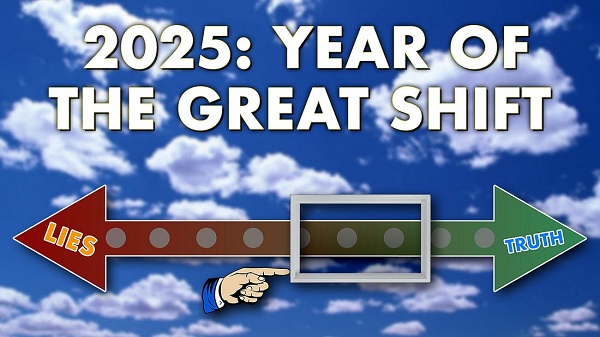COVID-19
US House COVID report vindicates lab leak theory but tries to defend ‘success’ of the jabs

From LifeSiteNews
“the federal government supported dangerous gain-of-function research in Wuhan, China without adequate transparency or oversight, and that former White House COVID adviser and National Institute of Allergy & Infectious Diseases (NIAID) director Dr. Anthony Fauci “played semantics with the definition of gain-of-function research” to deny it
The U.S. House Oversight & Accountability Committee’s Select Subcommittee on the Coronavirus Pandemic has released its long-awaited After Action Review on COVID-19 and the government response, which affirms the verdict that COVID most likely originated in a lab through gain-of-function research and broadly condemns the lockdowns of personal freedom and economic activity but attempts to walk a far finer and sometimes contradictory line on the COVID vaccines.
Worked on for almost two years, the 520-page report is billed as the “single most thorough review of the pandemic conducted to date,” according to a press release from the committee.
“This work will help the United States, and the world, predict the next pandemic, prepare for the next pandemic, protect ourselves from the next pandemic, and hopefully prevent the next pandemic. Members of the 119th Congress should continue and build off this work, there is more information to find and honest actions to be taken,” said Republican Rep. Brad Wenstrup of Ohio, the chairman of the subcommittee. “The COVID-19 pandemic highlighted a distrust in leadership. Trust is earned. Accountability, transparency, honesty, and integrity will regain this trust. A future pandemic requires a whole of America response managed by those without personal benefit or bias. We can always do better, and for the sake of future generations of Americans, we must. It can be done.”
The report concludes that COVID most likely “emerged as the result of a laboratory or research related accident,” that the federal government supported dangerous gain-of-function research (that entails intentionally strengthening viruses to better study their potential effects) in Wuhan, China without adequate transparency or oversight, and that former White House COVID adviser and National Institute of Allergy & Infectious Diseases (NIAID) director Dr. Anthony Fauci “played semantics with the definition of gain-of-function research” to deny it, as well as prompting creation of the controversial “Proximal Origins” paper to attempt to discredit the lab-leak theory.
It further found that officials within NIAID actively attempted to flout Freedom of Information Act (FOIA) requests for documents on the matter, such as by intentionally misspelling various names and terms so they would be harder to find in word searches.
The report goes on to conclude that the enormous sums of money the government doled out in the name of COVID relief was rife with waste and abuse, including more than $191 billion in unemployment fraud, $64 billion worth of fraud in the Paycheck Protection Program, and the loss of $200 billion due to the Small Business Administration failing to implement proper oversight and controls.
Meanwhile, the infamous “social distancing” guidance for people to stand at least six feet apart was based on “no scientific trials or studies,” but despite admitting as much, Fauci declined to push back because, in his words, it was “not appropriate to be publicly challenging a sister organization.” Face masks were similarly unsupported by the science and ultimately proven to be ineffective at limiting COVID’s spread, and widespread lockdowns of businesses and public gatherings caused significant harm to the economy, to physical and mental health, and to children’s education and social development far outweighing whatever good they may have done.
On the subject of the controversial COVID vaccines, however, the report is far more deferential. It acknowledges that the shots “had adverse events that must be thoroughly investigated,” and discusses various shortcomings in the government’s reporting systems for adverse vaccine events but still concludes that, overall, the vaccines were “largely safe and effective,” and credits them with saving “millions” of lives.
Operation Warp Speed, the Trump administration initiative to develop vaccines for COVID in a fraction of the time vaccines usually take, “was a tremendous success,” the subcommittee says, and the resulting vaccines “undoubtedly saved millions of lives by diminishing likelihood of severe disease and death.” It even faults President Joe Biden and Vice President Kamala Harris, who were running against Donald Trump for the White House at the time, for “question(ing) the safety and efficacy of COVID-19 vaccinations” before they were released.
At the same time, the report faults the following Biden administration for mandating the shots and rushing approval of vaccine booster doses, downplaying natural immunity, failing to properly adjudicate vaccine injuries, and exaggerating the vaccines’ value.
“COVID-19 vaccines were tremendously important in reducing the severity of COVID-19 symptoms and were extremely effective in doing so,” the report claims. “However, the Biden Administration oversold the power of these vaccines. On more than one occasion, President Biden himself overstated the vaccine’s ability to prevent infection and transmission. These false statements likely contributed to Americans’ confusion about COVID-19 vaccines and reduced overall vaccine confidence.”
The subcommittee report largely reiterates and aligns with a wealth of previous findings on the failures of lockdowns and forced masking, as well as the origins of COVID-19. On the subject of the vaccines, however, it neglects a large body of evidence of far more widespread harm.
The federal Vaccine Adverse Event Reporting System (VAERS) reports 38,068 deaths, 218,646 hospitalizations, 22,002 heart attacks, and 28,706 myocarditis and pericarditis cases as of October 25, among other ailments. U.S. Centers for Disease Control & Prevention (CDC) researchers have recognized a “high verification rate of reports of myocarditis to VAERS after mRNA-based COVID-19 vaccination,” leading to the conclusion that “under-reporting is more likely” than over-reporting.
An analysis of 99 million people across eight countries published February in the journal Vaccine “observed significantly higher risks of myocarditis following the first, second and third doses” of mRNA-based COVID vaccines, as well as signs of increased risk of “pericarditis, Guillain-Barré syndrome, and cerebral venous sinus thrombosis,” and other “potential safety signals that require further investigation.” In April, the CDC was forced to release by court order 780,000 previously undisclosed reports of serious adverse reactions, and a study out of Japan found “statistically significant increases” in cancer deaths after third doses of mRNA-based COVID-19 vaccines and offered several theories for a causal link.
In Florida, an ongoing grand jury investigation into the vaccines’ manufacturers is slated to release a report on the safety and effectiveness of the COVID vaccines, and a lawsuit by the state of Kansas has been filed accusing Pfizer of misrepresentation for calling the shots “safe and effective.” The findings of both efforts are highly anticipated.
All eyes are currently on returning President Trump, and whose health team, which will be helmed by prominent vaccine critic Robert F. Kennedy, Jr. as his nominee for Secretary of Health & Human Services, has given mixed signals as to the prospects of reconsidering the shots for which he has long taken credit, and has nominated both critics and defenders of establishment COVID measures for a number of administration roles.
COVID-19
Judge denies Canadian gov’t request to take away Freedom Convoy leader’s truck

From LifeSiteNews
A judge ruled that the Ontario Court of Justice is already ‘satisfied’ with Chris Barber’s sentence and taking away his very livelihood would be ‘disproportionate.’
A Canadian judge has dismissed a demand from Canadian government lawyers to seize Freedom Convoy leader Chris Barber’s “Big Red” semi-truck.
On Friday, Ontario Court of Justice Judge Heather Perkins-McVey denied the Crown’s application seeking to forfeit Barber’s truck.
She ruled that the court is already “satisfied” with Barber’s sentence and taking away his very livelihood would be “disproportionate.”
“This truck is my livelihood,” said Barber in a press release sent to LifeSiteNews.
“Trying to permanently seize it for peacefully protesting was wrong, and I’m relieved the court refused to allow that to happen,” he added.
Criminal defense lawyer Marwa Racha Younes was welcoming of the ruling as well, stating, “We find it was the right decision in the circumstances and are happy with the outcome.”
John Carpay, president of the Justice Centre for Constitutional Freedoms (JCCF), said the decision is “good news for all Canadians who cherish their Charter freedom to assemble peacefully.”
READ: Freedom Convoy protester appeals after judge dismissed challenge to frozen bank accounts
“Asset forfeiture is an extraordinary power, and it must not be used to punish Canadians for participating in peaceful protest,” he added in the press release.
As reported recently by LifeSiteNews, the Canadian government claimed that Barber’s truck is an “offence-related property” relating to his involvement in the 2022 protests against Canada’s COVID mandates.
At this time, the court ruling ends any forfeiture proceedings for the time being, however Barber will continue to try and appeal his criminal conviction and house arrest sentence.
Barber’s truck, a 2004 Kenworth long-haul he uses for business, was a focal point in the 2022 protests. He drove it to Ottawa, where it was parked for an extended period of time, but he complied when officials asked him to move it.
On October 7, 2025, after a long trial, Ontario Court Justice Perkins-McVey sentenced Barber and Tamara Lich, the other Freedom Convoy leader, to 18 months’ house arrest. They had been declared guilty of mischief for their roles as leaders of the 2022 protest against COVID mandates, and as social media influencers.
Lich and Barber have filed appeals of their own against their house arrest sentences, arguing that the trial judge did not correctly apply the law on their mischief charges.
Government lawyers for the Crown have filed an appeal of the acquittals of Lich and Barber on intimidation charges.
The pair’s convictions came after a nearly two-year trial despite the nonviolent nature of the popular movement.
COVID-19
Freedom Convoy protester appeals after judge dismissed challenge to frozen bank accounts

From LifeSiteNews
Protestor Evan Blackman’s legal team argues Trudeau’s Emergencies Act-based bank account freezes were punitive state action tied directly to protest participation.
A Freedom Convoy protester whose bank accounts were frozen by the Canadian government says a judge erred after his ruling did not consider the fact that the funds were frozen under the Emergencies Act, as grounds for a stay of proceedings.
In a press release sent out earlier this week, the Justice Centre for Constitutional Freedoms (JCCF) said that Freedom Convoy protestor Evan Blackman will challenge a court ruling in his criminal case via an appeal with the Ontario Superior Court of Justice.
“This case raises serious questions about how peaceful protest is treated in Canada and about the lasting consequences of the federal government’s unlawful use of the Emergencies Act,” noted constitutional lawyer Chris Fleury. “The freezing of protestors’ bank accounts was part of a coordinated effort to suppress dissent, and courts ought to be willing to scrutinize that conduct.”
Blackman was arrested on February 18, 2022, during the police crackdown on Freedom Convoy protests against COVID restrictions, which was authorized by the Emergencies Act (EA). The EA was put in place by former Prime Minister Justin Trudeau’s Liberal government, which claimed the protests were violent, despite no evidence that this was the case.
Blackman’s three bank accounts with TD Bank were frozen due to his participation in the Freedom Convoy, following a directive ordered by Trudeau.
As reported by LifeSiteNews, in November of this year, Blackman was convicted at his retrial even though he had been acquitted at his original trial. In 2023, Blackman’s “mischief” and “obstructing police” charges were dismissed by a judge due to lack of evidence and the “poor memory of a cop regarding key details of the alleged criminal offences.”
His retrial resulted in Blackman getting a conditional discharge along with 12 months’ probation and 122 hours of community service, along with a $200 victim fine surcharge.
After this, Blackman’s application for a stay of proceedings was dismissed by the court. He had hoped to have his stay of proceedings, under section 24(1) of the Charter of Rights and Freedoms, allowed. However, the judge ruled that the freezing of his bank accounts was legally not related to his arrest, and because of this, the stay of proceedings lacked standing.
The JCCF disagreed with this ruling, noting, it “stands in contrast to a Federal Court decision finding that the government’s invocation of the Emergencies Act was unreasonable and violated Canadians’ Charter rights, including those targeted by the financial measures used against Freedom Convoy protestors.”
As of press time, a hearing date has not been scheduled.
In 2024, Federal Court Justice Richard Mosley ruled that Trudeau was “not justified” in invoking the Emergencies Act.
In early 2022, the Freedom Convoy saw thousands of Canadians from coast to coast come to Ottawa to demand an end to COVID mandates in all forms. Despite the peaceful nature of the protest, Trudeau’s federal government enacted the EA in mid-February.
After the protesters were cleared out, which was achieved through the freezing of bank accounts of those involved without a court order as well as the physical removal and arrest of demonstrators, Trudeau revoked the EA on February 23, 2022.
-

 Health2 days ago
Health2 days agoFDA warns ‘breast binder’ manufacturers to stop marketing to gender-confused girls
-

 International2 days ago
International2 days ago2025: The Year The Narrative Changed
-

 Business1 day ago
Business1 day agoThere’s No Bias at CBC News, You Say? Well, OK…
-

 Uncategorized22 hours ago
Uncategorized22 hours agoMortgaging Canada’s energy future — the hidden costs of the Carney-Smith pipeline deal
-

 Agriculture2 days ago
Agriculture2 days agoSupply Management Is Making Your Christmas Dinner More Expensive
-

 Daily Caller2 days ago
Daily Caller2 days agoTrump Reportedly Escalates Pressure On Venezuela With Another Oil Tanker Seizure
-

 International22 hours ago
International22 hours agoAustralian PM booed at Bondi vigil as crowd screams “shame!”
-

 Opinion1 day ago
Opinion1 day agoReligion on trial: what could happen if Canada passes its new hate speech legislation









